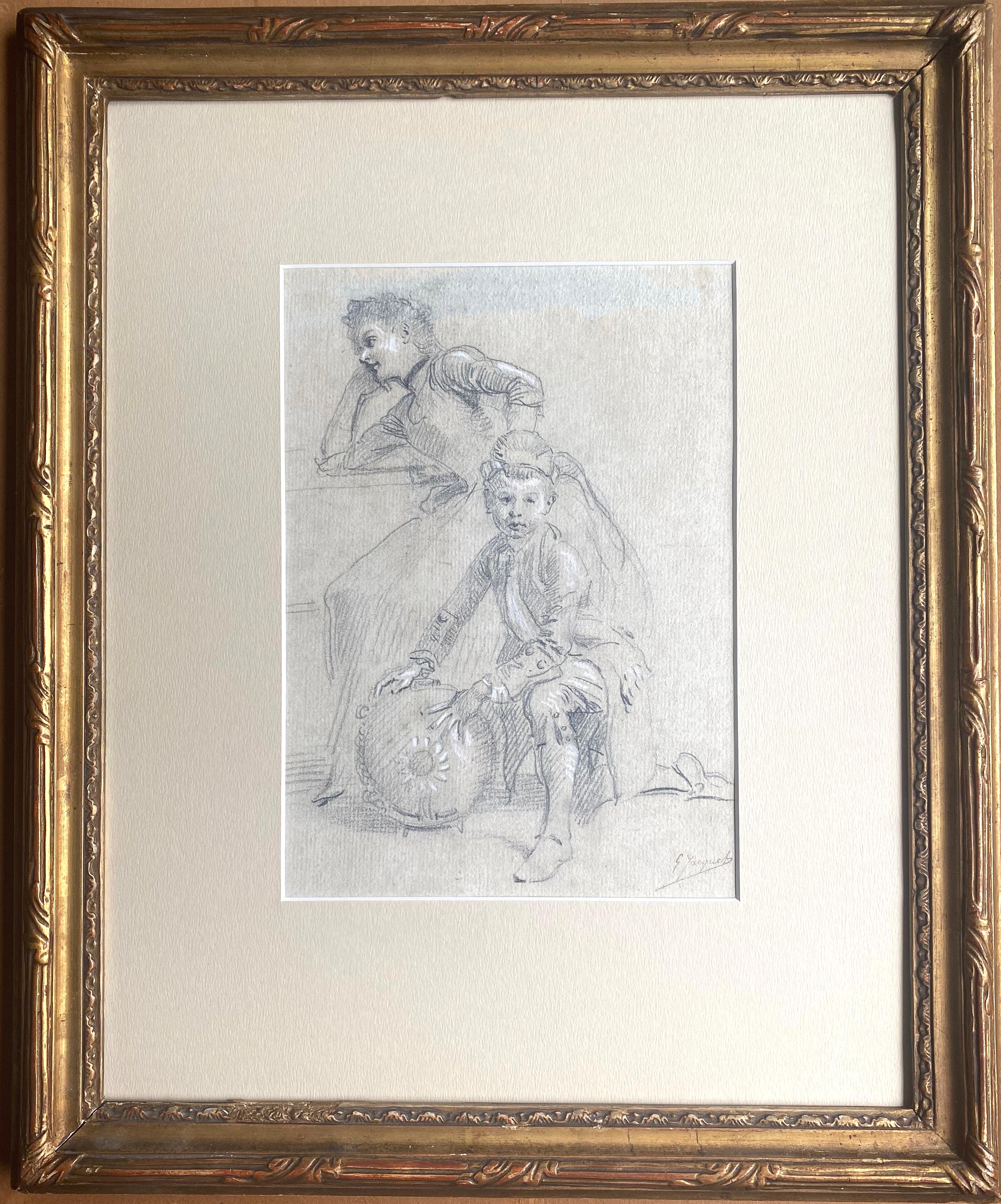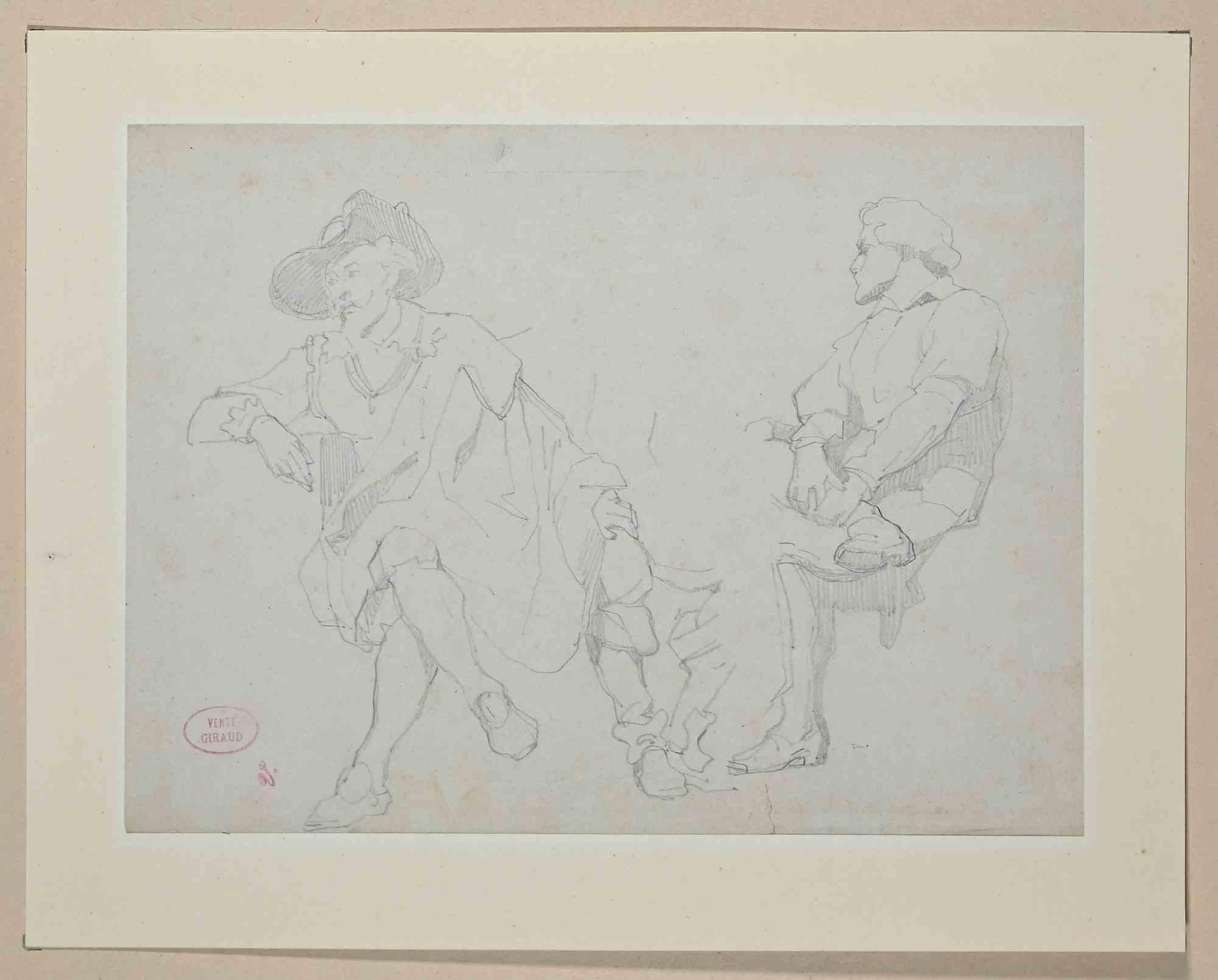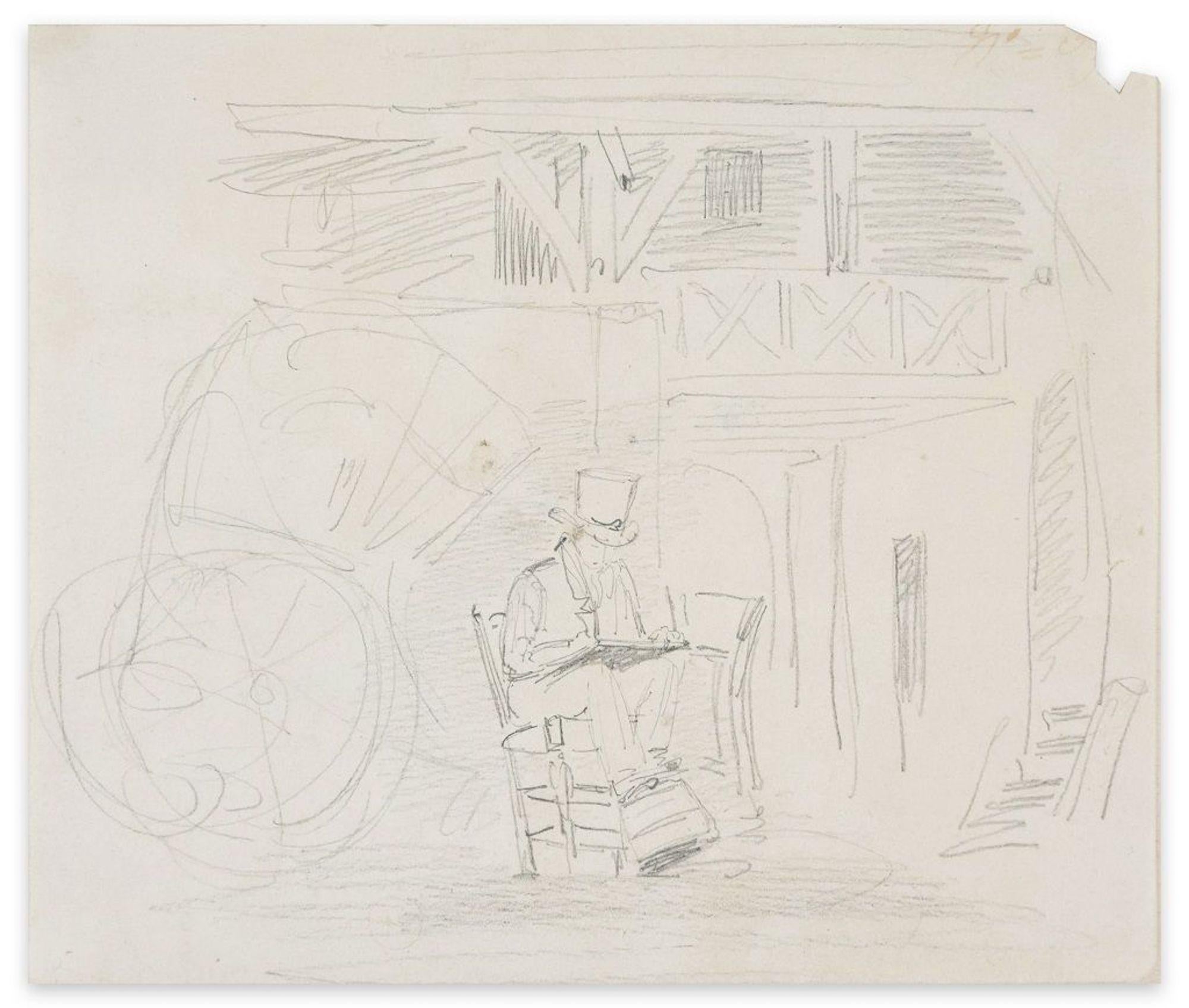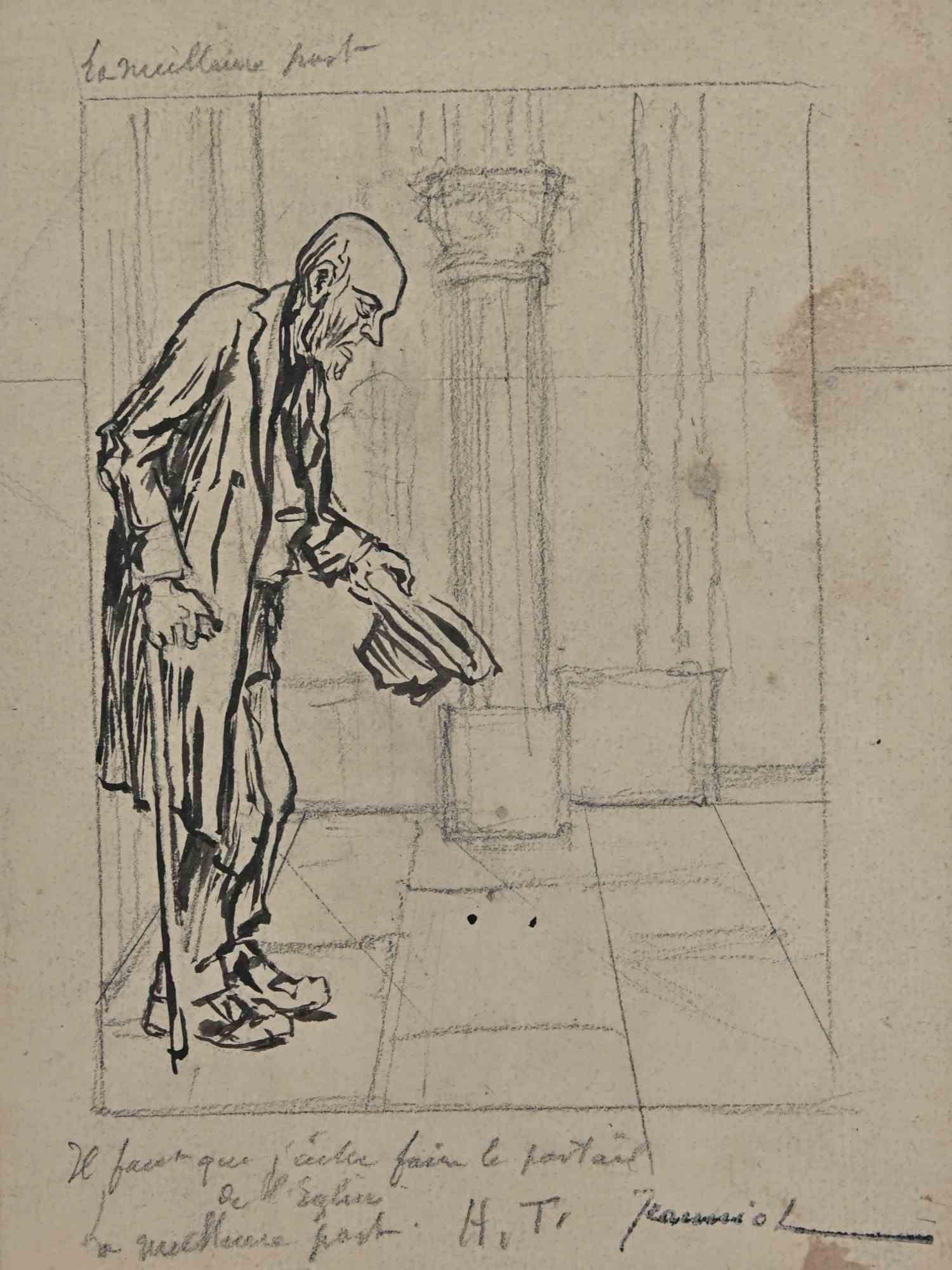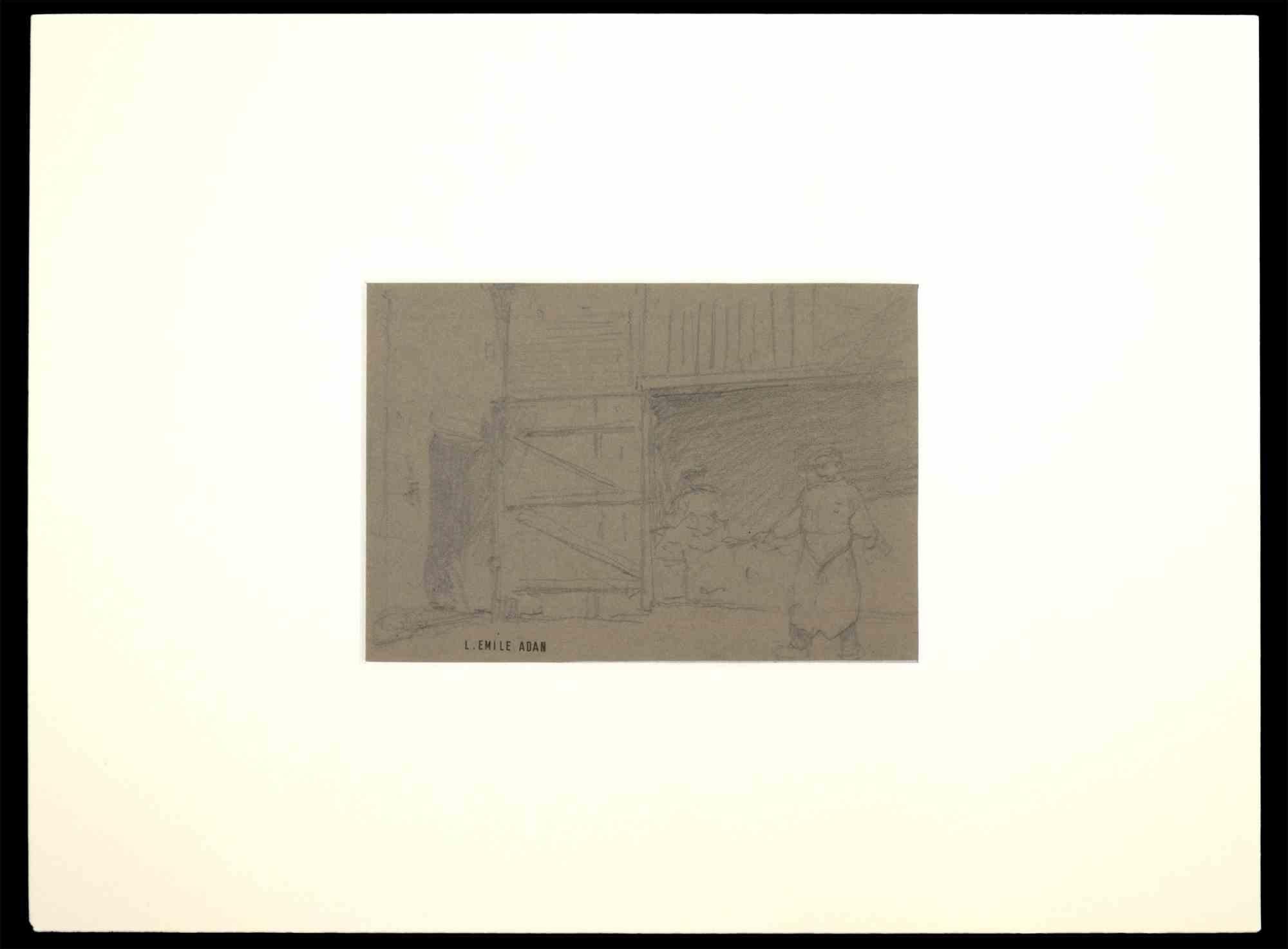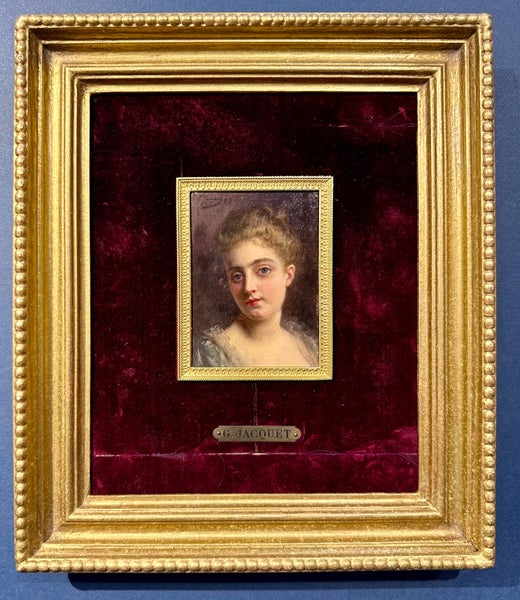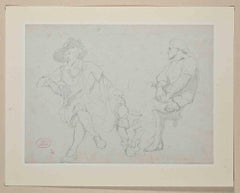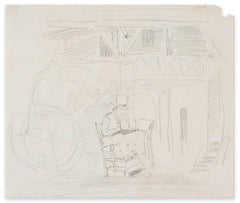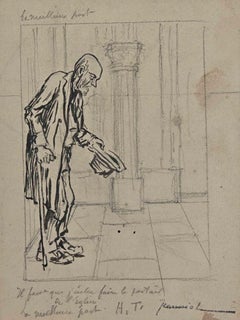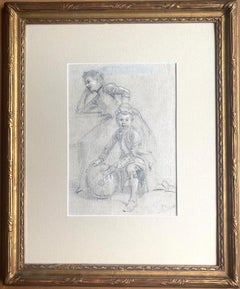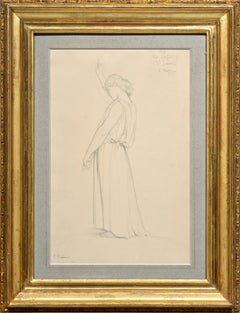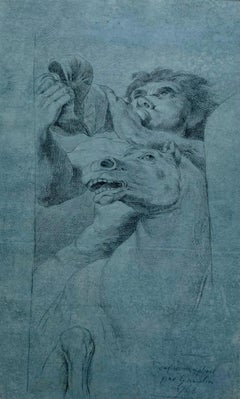Gustave Jean JacquetLe Caveau - Original Drawing by Gustave Jean Jacquet - 18801880
1880
About the Item
- Creator:Gustave Jean Jacquet (1846 - 1909, French)
- Creation Year:1880
- Dimensions:Height: 12.8 in (32.5 cm)Width: 9.85 in (25 cm)Depth: 0.04 in (1 mm)
- Medium:
- Movement & Style:
- Period:
- Framing:Framing Options Available
- Condition:Insurance may be requested by customers as additional service, contact us for more information.
- Gallery Location:Roma, IT
- Reference Number:Seller: T-1242221stDibs: LU65038842802
Gustave Jean Jacquet
Gustave Jean Jacquet was a renowned portraitist and genre painter, who worked in oil and pastels in Paris in the latter half of the 19th century. Jacquet was born in Paris in 1846 and began his artistic training under the guidance of the celebrated academic painter William Adolphe Bouguereau at the École des Beaux-Arts. Jacquet quickly assimilated all that he was taught, debuting at the Salon of the Société des Artistes Français at 19, with two genre paintings titled — La modestie (Modesty) and La tristesse (Sadness). After his debut, Jacquet’s style changed drastically and was no longer reflective of Bouguereau’s manner. Jacquet paid great attention to minute details in the fashions of the sixteenth, seventeenth, and eighteenth centuries. At the 1867 Salon, Jacquet presented his painting entitled — The Call to Arms, where it attracted much public attention. The following year at the Salon, he earned a third-place medal with Sortie d’Armée au XVI Siècle and sold Sortie de Lansquenets to the state. In 1878, he exhibited Joan of Arc Praying for France at the Salon; and the same year, at the Exposition Universelle, he submitted a revised and solely executed allegory on La Reverie which earned him heightened success and a widening reputation. In 1875, at 29, Jacquet was awarded a premier medal. The Légion d’honneur (Legion of Honor) decorated him four years later. The artist’s style continuously advanced as he became aware of the techniques and philosophies of colleagues around the continent. Jacquet had traveled to Italy, Germany and England (where he exhibited at the Grosvenor Gallery in London) collecting ideas and souvenirs. Jacquet brought back his atelier tapestries, armor, fabrics and draperies from other countries that he used as props for his paintings. Regarding the artist, the art critic Louis-Edmond Duranty declared: “Behold an artist, unknown today, which will be celebrated tomorrow.” The grace and charm with which Jacquet depicted his subjects appealed to the connoisseurs of fine art. Jacquet was also one of the most graceful painters of the female nude.
- ShippingRetrieving quote...Shipping from: Monaco, Monaco
- Return Policy
More From This Seller
View AllLate 19th Century Modern Figurative Drawings and Watercolors
Pencil
1850s Figurative Drawings and Watercolors
Pencil
Early 20th Century Modern Figurative Drawings and Watercolors
Pencil
Early 20th Century Modern Figurative Drawings and Watercolors
Charcoal
Early 20th Century Modern Figurative Drawings and Watercolors
Pencil
1880s Modern Figurative Drawings and Watercolors
Pencil
You May Also Like
Late 19th Century French School Figurative Drawings and Watercolors
Charcoal, Laid Paper
1890s Academic Portrait Drawings and Watercolors
Carbon Pencil
1840s Old Masters Figurative Drawings and Watercolors
Chalk
18th Century French School Figurative Drawings and Watercolors
Chalk, Handmade Paper
1750s Old Masters Figurative Drawings and Watercolors
Ink
Antique 1850s French Other Drawings
Paper
